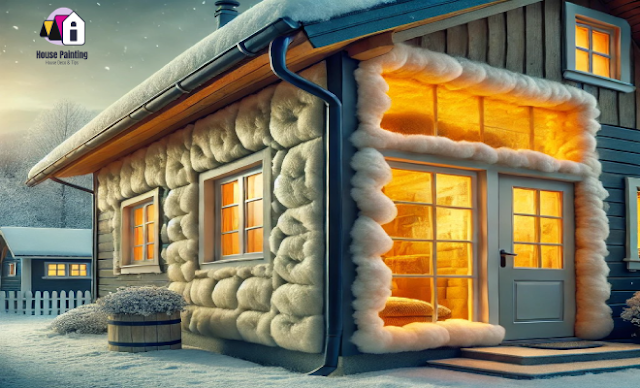As temperatures drop, maintaining a warm and comfortable home becomes a priority, especially in regions prone to long, harsh winters. Insulating paint has emerged as an innovative solution for improving energy efficiency and keeping homes cozy without drastically increasing heating costs.
Here’s everything you need to know about insulating paint and why it’s a game-changer for cold homes.
What is Insulating Paint?
Insulating paint is a specialized coating infused with advanced materials like ceramic microspheres or reflective additives. These components create a thermal barrier that helps retain heat inside your home while reducing the amount of cold air that seeps in.
Unlike traditional insulation methods, insulating paint can be applied directly to walls, ceilings, or even exterior surfaces, offering a cost-effective and less invasive solution.
Benefits of Insulating Paint in Cold Homes
1. Energy Efficiency
Insulating paint reduces heat loss through walls, helping your heating system work more efficiently. By improving your home's thermal performance, you can save significantly on energy bills.
2. Enhanced Comfort
Homes treated with insulating paint feel warmer and more comfortable during colder months. The paint minimizes drafts and helps maintain consistent indoor temperatures.
3. Eco-Friendly Solution
Using less energy to heat your home reduces your carbon footprint. Many insulating paints are also made from sustainable materials, aligning with eco-conscious living.
4. Versatility
Insulating paint can be applied to various surfaces, including interior and exterior walls, ceilings, and even attics. It’s suitable for both new builds and renovations.
5. Moisture and Mold Resistance
Some insulating paints are designed to resist condensation, helping to prevent dampness and mold—a common issue in colder homes.
How Does Insulating Paint Work?
Insulating paint works by creating a thermal barrier that reflects heat back into the room while minimizing heat transfer through walls. The ceramic microspheres or reflective agents within the paint reduce the conduction of heat, ensuring that warmth stays inside where it belongs.
Where to Use Insulating Paint
- Interior Walls: Apply it on walls that face the exterior of the home to reduce heat loss.
- Ceilings: Prevent heat from escaping upward, especially in homes with uninsulated roofs.
- Basements: Use it to create a warmer, more comfortable living space in colder basement areas.
- Exteriors: Protect the outer walls of your home from extreme weather conditions.
Application Tips for Insulating Paint
- Prepare the Surface: Clean and dry the surface before applying the paint to ensure proper adhesion.
- Use Primer: Apply a primer if the wall is porous or uneven to enhance the insulating paint’s performance.
- Layering: Apply two or more coats for optimal thermal performance.
- Professional Help: For large projects, consider hiring a professional to ensure consistent application.
Traditional Insulation vs. Insulating Paint
While traditional insulation materials like fiberglass or foam remain effective for large-scale thermal management, insulating paint offers unique advantages:
- Easier application process.
- Ideal for spaces where adding bulky insulation isn’t possible.
- Works as a complementary layer to existing insulation systems for added efficiency.
Is Insulating Paint Worth It?
For homeowners in cold climates, insulating paint provides a practical and affordable way to boost energy efficiency and comfort. While it may not entirely replace traditional insulation, it serves as a valuable addition to your home's overall energy-saving strategy.
Final Thoughts
Insulating paint is more than just a coat of color—it’s an investment in your home’s comfort, efficiency, and sustainability. With its ability to keep heat in and cold out, it’s an excellent choice for anyone looking to stay warm while saving on energy bills.
Upgrade your home this winter with the power of insulating paint, and experience the difference firsthand!

